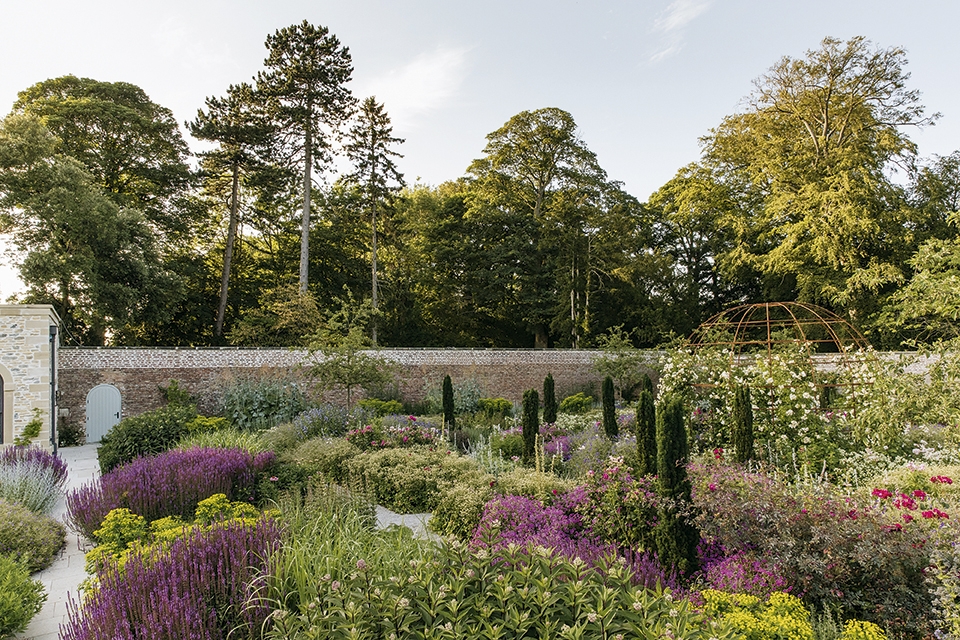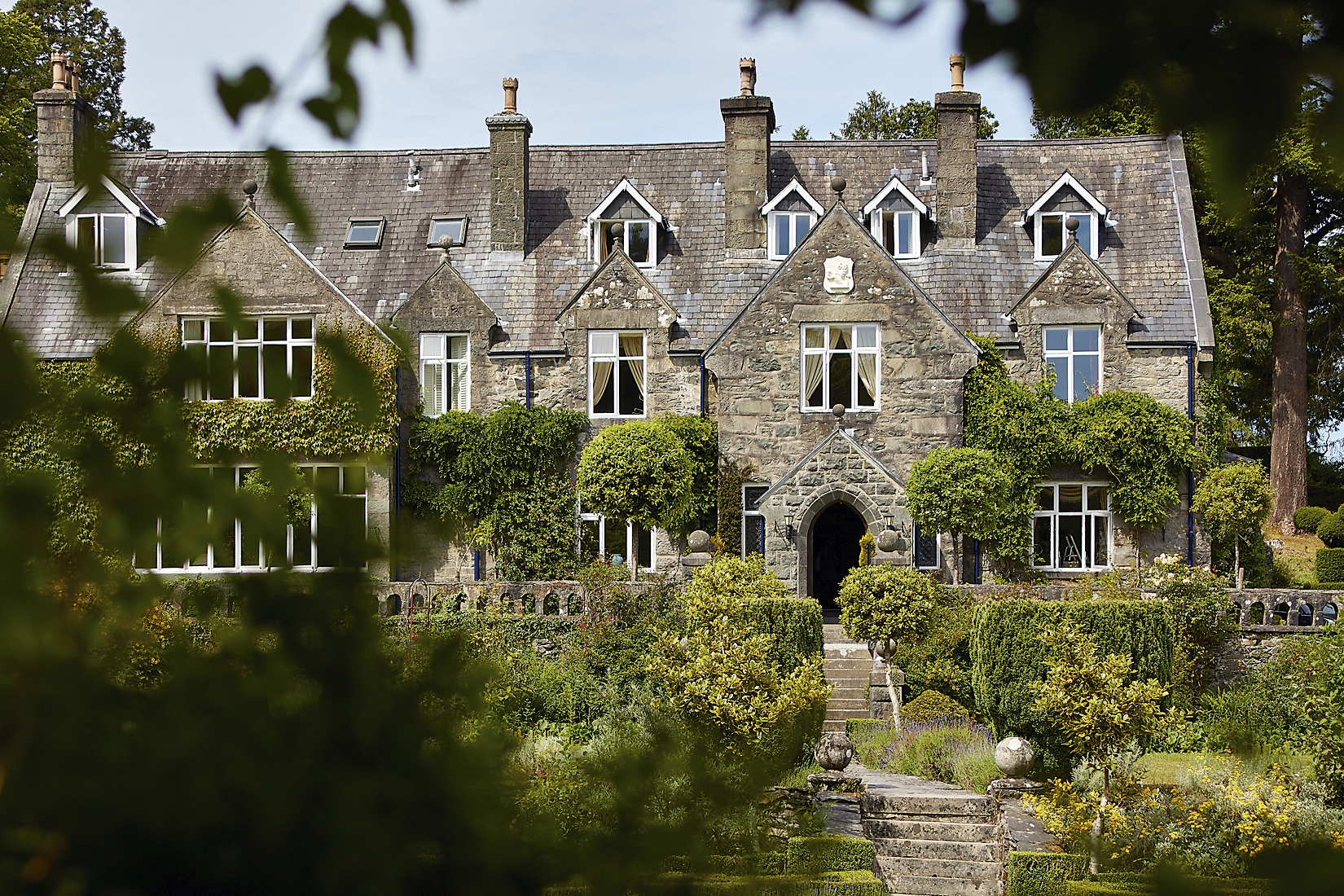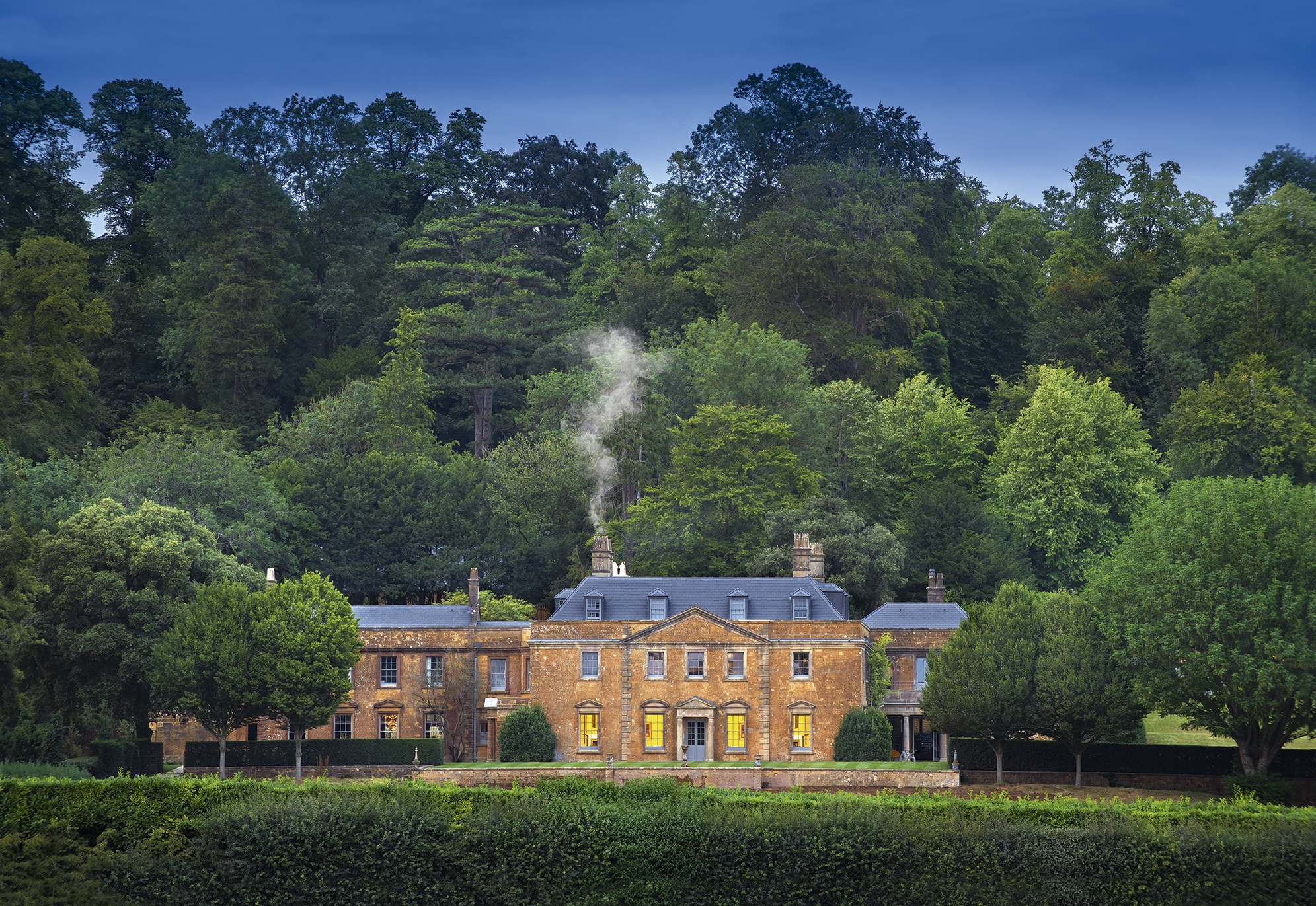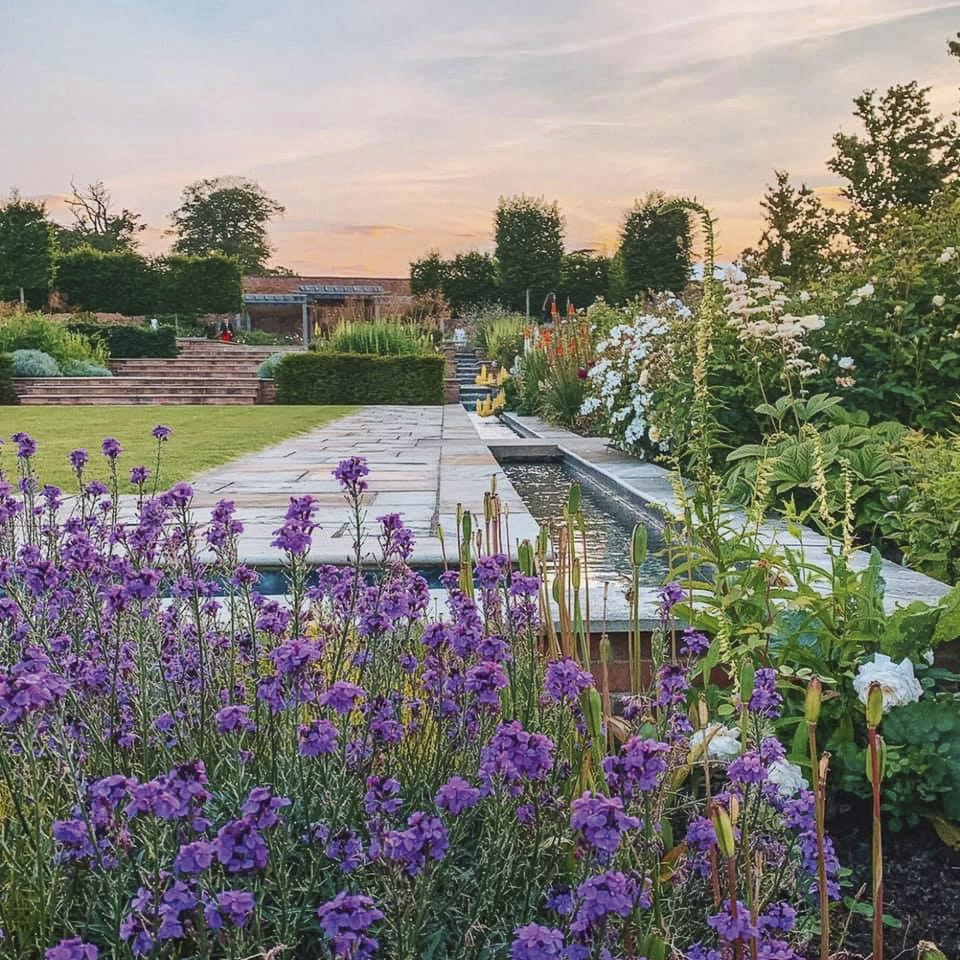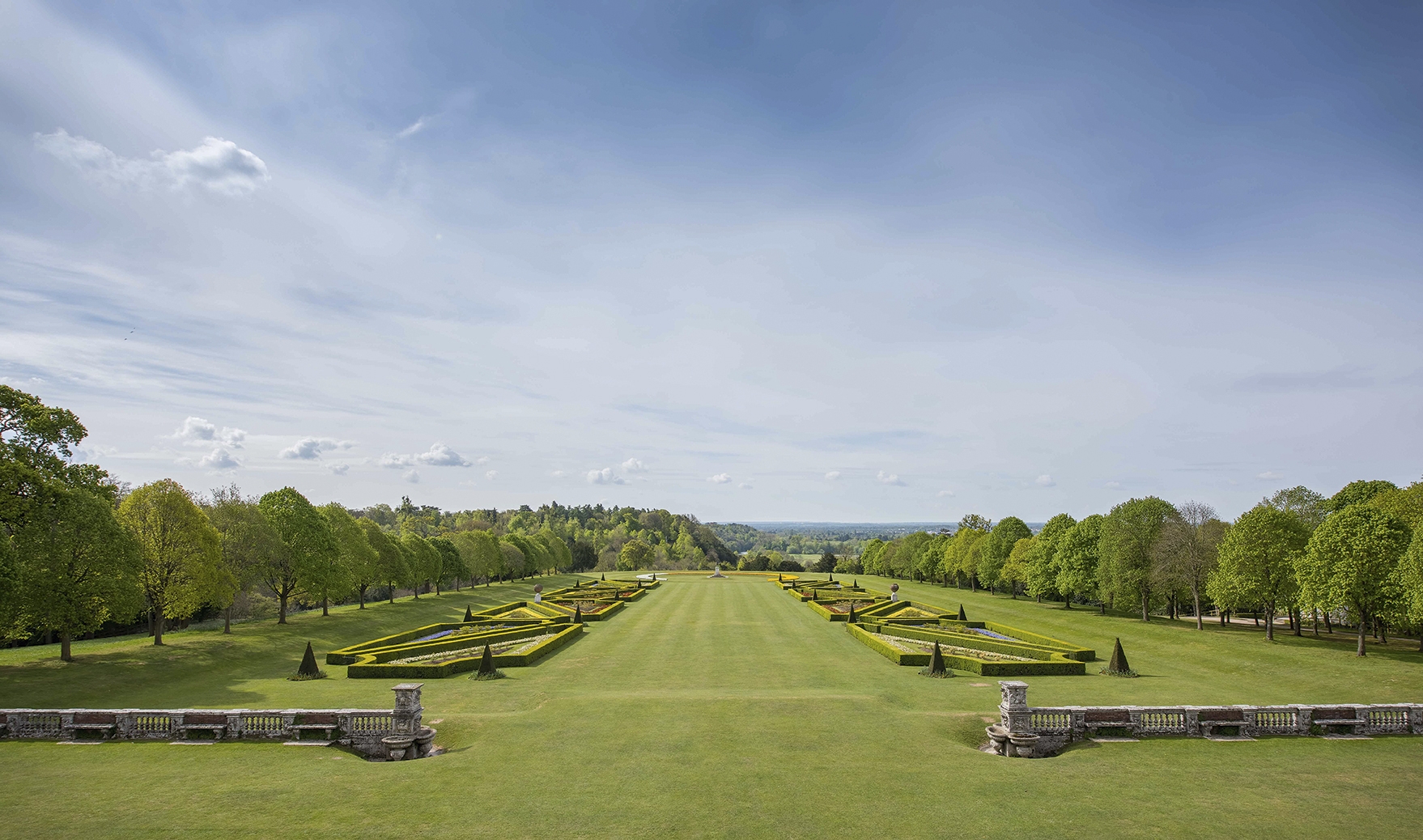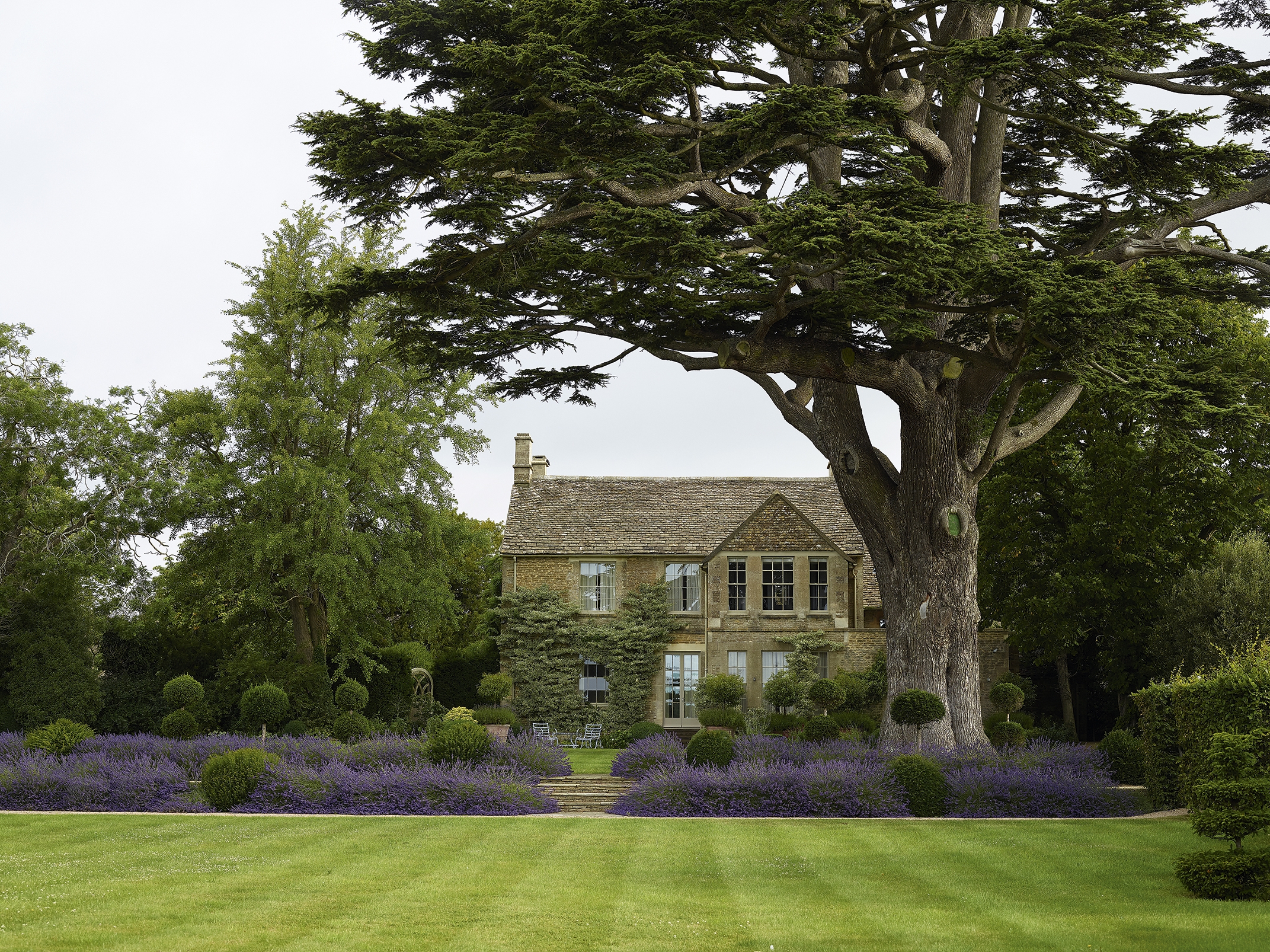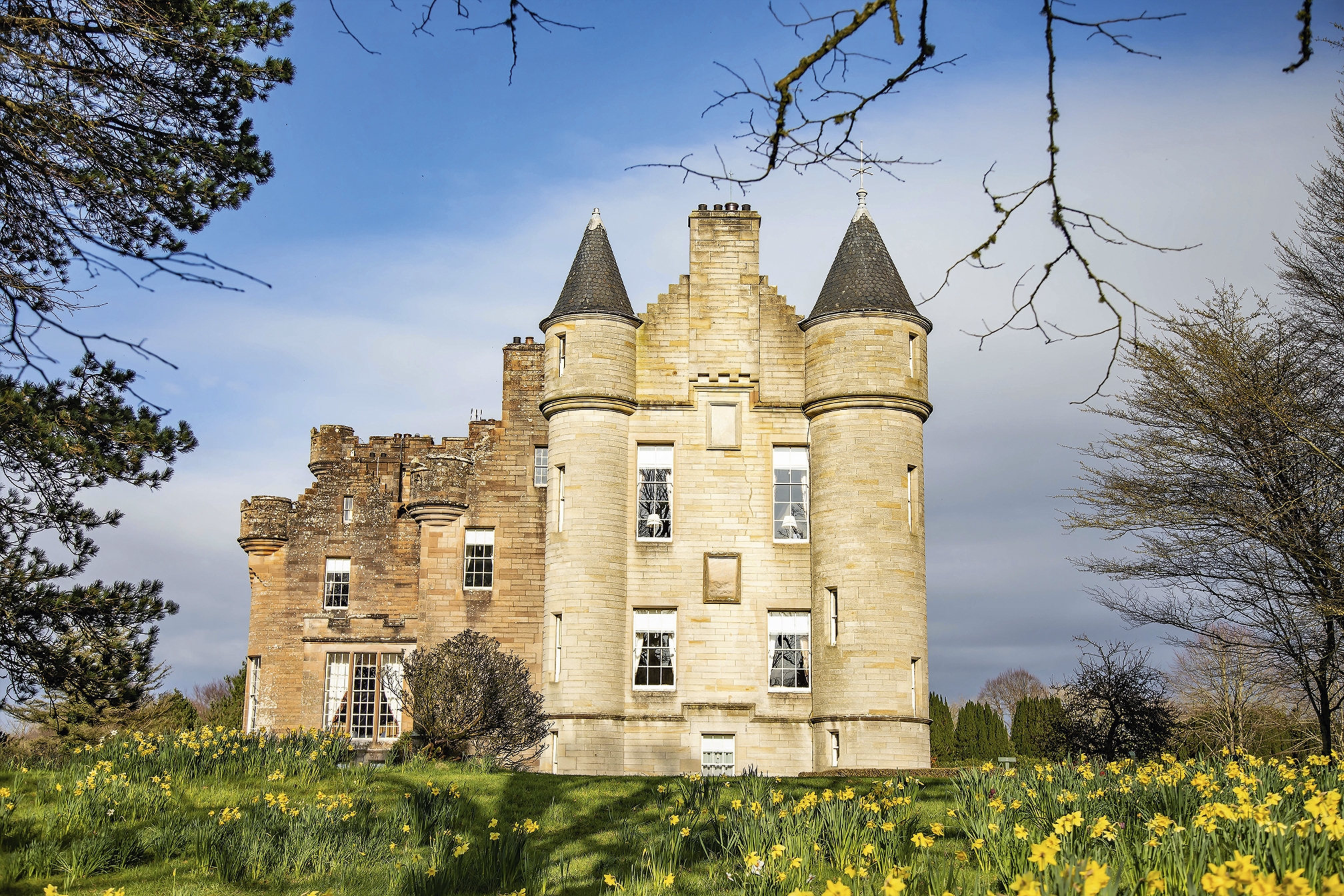PENMAENUCHAF GWYNEDD
The windows of Penmaenuchaf are more like natural picture
frames. From every angle, their glassy arches and rectangles form
portraits of emerald, lime and parakeet green, of bee-lined
borders to bushy, buffeted treetops. Beyond its chimneys and
gables, the colours spill into golden gravel paths and lavender
borders, with pastel roses and deep poppies, rhododendrons
and azaleas in blush and magenta.
The 16th-century Penmaenuchaf estate is set in 8.5 hectares,
caught between the rugged heights of Cadair Idris and the broad
Mawddach estuary far below. The gardens are registered in Cadw,
the Welsh government’s historic environment service, for their
garden; the wild sprawling woodlands with natural streams and
cultivated waterfalls; and the serene, untamed water gardens. In
spring, daffodils explode across the lawn, with bluebells hot on
their heels. Summer hydrangeas then steal the show, before
autumn paints the vista in shades of bronze and copper.
Herbs and produce from the nascent kitchen garden’s tilled
below), who works with farmers and growers to ensure ingredients
are as high quality and local as possible. The Welsh storecupboard
Cured mackerel meets turnip, fennel and buttermilk, veal
sweetbreads rest atop pumpkin risotto, and Coed y Brenin deer is paired with beetroot, artichoke and blackberry. Honey comes
from their own hives, while Tom’s team forage for mushrooms and
wild garlic. From the cosy restaurant, diners look out beyond
ponds and trees to the stark beauty of Snowdonia, each mouthful
accompanied by long vistas, where nature comes both cultivated
and cragged.



